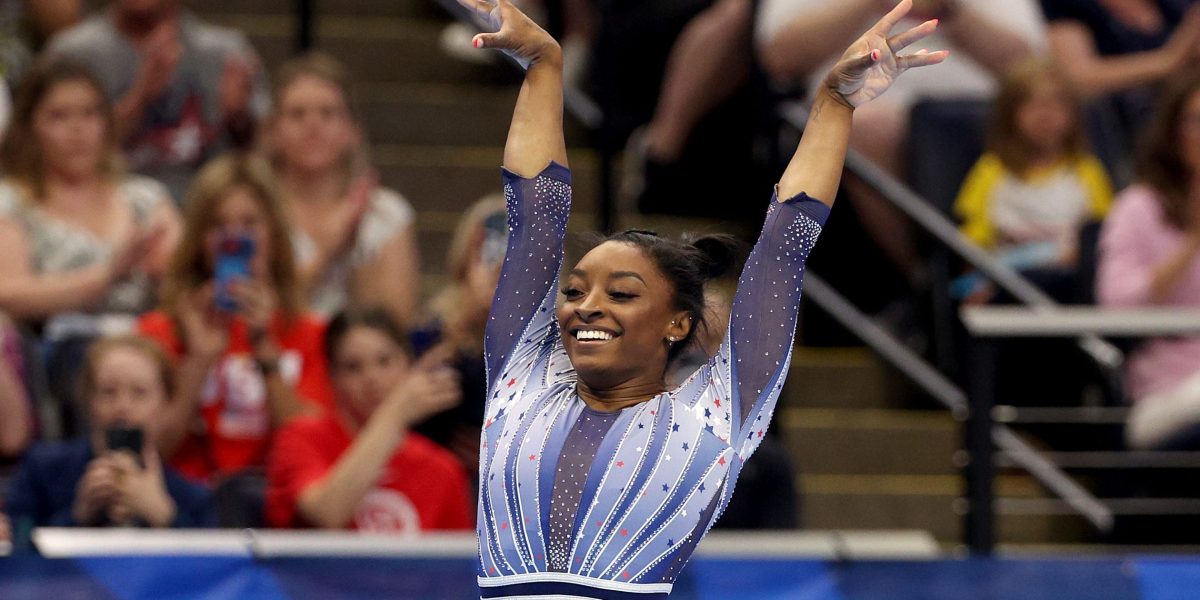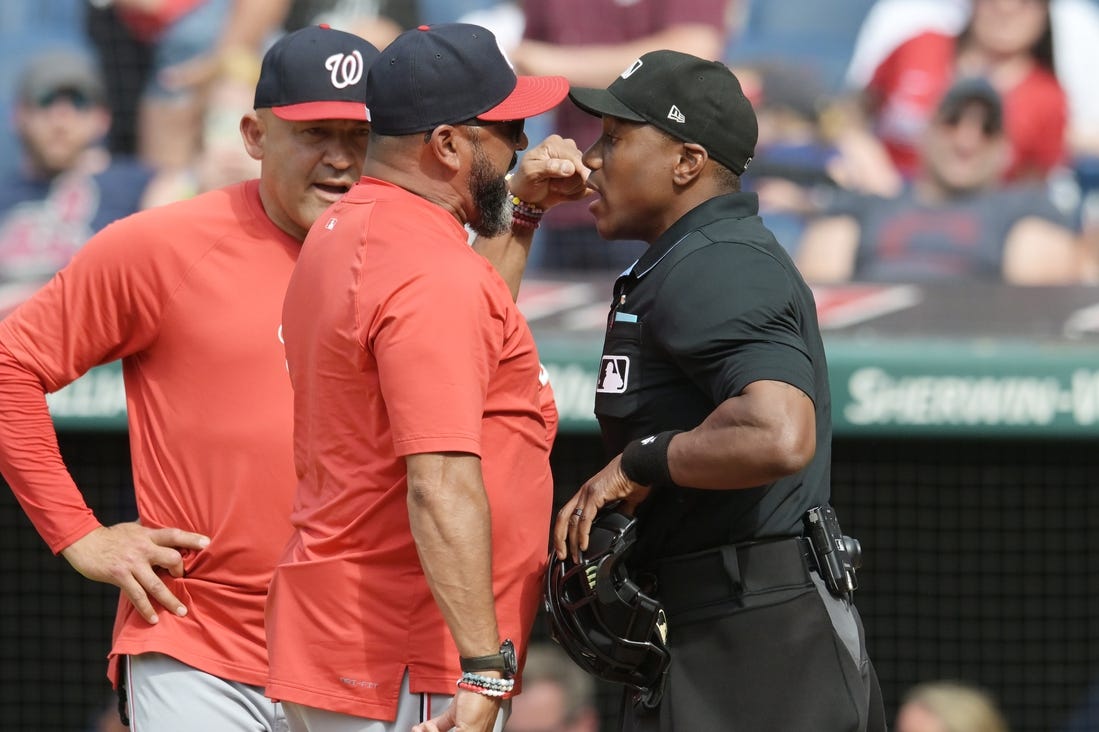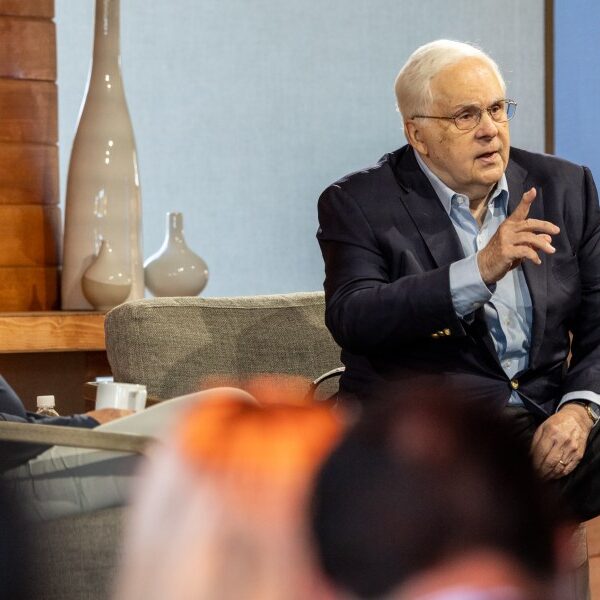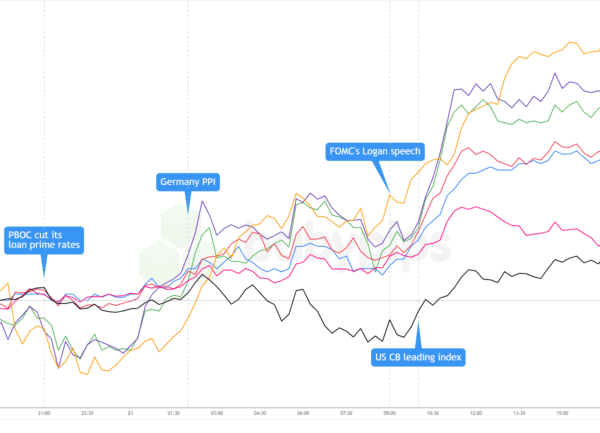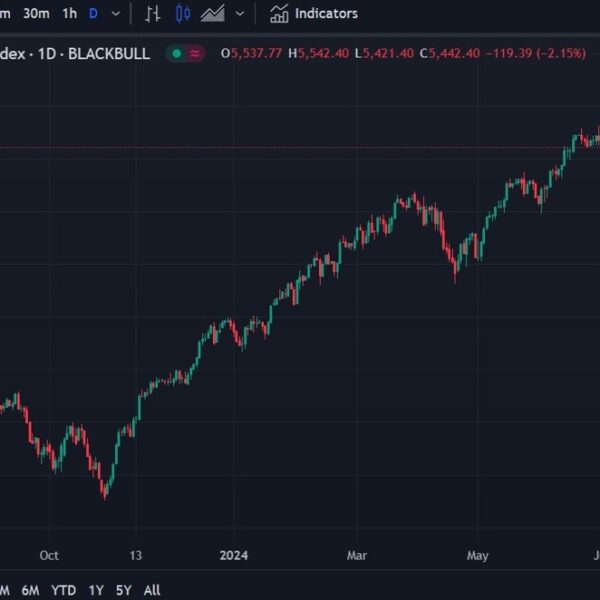

Paris’ latest designer runway will be on its gymnastic tumbling floor at the Olympic Games later this month. During this unofficial fashion week, its models will be the U.S. gymnastics team, who will tuck, roll, and flip in eight bespoke leotards adorned with 47,000 Swarovski crystals. The uniforms aren’t for sale, but would retail for about $3,000 each.
“I think about how special the moments are, especially the Olympic Games, with it only being once every four years, and how they’re going to feel,” said Annie Heffernon, vice president of the women’s program at USA Gymnastics, told the Washington Post. “Regardless of their performance, I want them to feel amazing and beautiful when they go out and represent the U.S. in a leotard that they can be proud of.”
Designed and produced by Reading, Pennsylvania-based apparel company GK Elite, the leotards have up to 10,000 crystals applied in intricate patterns to custom fabric. The red, white, and blue color scheme is an obvious nod to the competitors’ nationality, but the ornate pattern of the crystals—as well as the unmistakable glow emanating from them—is a nod to Paris’ nickname of the City of Lights. The bright designs follow a convention of Olympic gymnasts donning themselves with ornamented uniforms, a trend that has increased in intensity since 2008 when gold medalist Nastia Liukin’s leotard had only 184 crystals on it.
The uniforms may be visually difficult to miss, but it’s the athletes who have garnered spectators’ attention. A peak of 8.2 million viewers watched gymnast Simone Biles secure her spot in the U.S. Olympic gymnastics team last month, among the highest ratings of this year’s U.S. trials. With seven Olympic medals, Biles has helped catapult herself and gymnastics into American popular culture.
All that glitters is gold
The U.S. gymnasts have expressed excitement about their leotards, but the Olympic uniforms, embellished with jewels and patterns, are also stitched in with controversy; some women’s outfits have drawn scrutiny for being too revealing at the expense of an athlete’s comfort and performance. U.S. national champion distance runner Lauren Fleshman said the women’s track uniforms—with high bikini lines that deviated from the shorts of the men’s kit—was a reflection of sports’ “betrayal of women’s bodies.”
“If this outfit was truly beneficial to physical performance, men would wear it,” she said on Instagram.
USA Gymnastics, the national governing body of the sport, told Fortune athletes have the option, per international regulations, to wear long leggings as part of their kit. Instead, gymnasts prefer to wear the traditional leotard.
“We are charged to create this beautiful intersection of fashion and sport and the Team USA leotard represents that at its pinnacle,” GK Elite CEO Matt Cowan told the Los Angeles Times. “But ultimately they’re there to perform. They’re there to win gold medals.”
Indeed, beyond dazzling viewers, the elaborate leotards have instilled confidence in athletes. During the Tokyo Olympics in 2021, U.S. gymnasts called one leotard “our lucky leo” because each athlete who wore the design earned a medal.
As the garment has grown in popularity among competitors, gymnasts have tailored the colors and patterns of the garments to their own tastes and draw inspiration from the wardrobe of superstars like Beyoncé. In an industry where athletes often make more in endorsements and brand deals than they do in winnings (Biles’ $7.1 million 2023 earnings consists of a $100,000 salary plus $7 million in endorsements), building a recognizable brand is a significant part of being a professional athlete.
“What Simone has with us is our equivalent of a Jordan brand,” Cowan said. “Simone has her signature collection that is inspired by her performances, her likes, her aesthetic, her innovation. She truly can bring a product that’s catered and representative of her to the community.”

